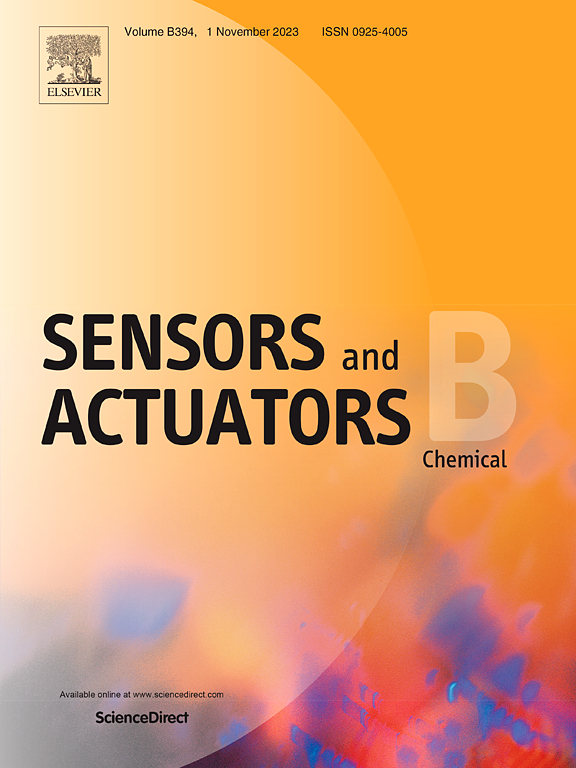COX-2靶向和缺氧激活IMC-NTR用于癌症诊断和治疗:体外和体内研究
IF 8
1区 化学
Q1 CHEMISTRY, ANALYTICAL
引用次数: 0
摘要
癌症诊断和治疗的一个重大挑战在于肿瘤的异质性和生物标志物如环氧化酶-2 (COX-2)和硝基还原酶(NTR)的特异性不足,这往往限制了传统治疗的疗效。为了解决这个问题,我们开发了一种新的治疗探针,IMC-NTR,设计用于在缺氧条件下选择性靶向COX-2和NTR,实现癌症进展和抑制转移的实时荧光成像。IMC- ntr是通过选择性COX-2抑制剂吲哚美辛(IMC)与硝基功能化萘酰亚胺偶联而构建的,该萘酰亚胺在缺氧条件下进行ntr介导的生物还原,在534 nm处产生显著的荧光开启。该探针对NTR具有较高的选择性和灵敏度,信噪比为22倍,检出限为0.0211 μg/mL。利用COX-2阳性的A549肺癌细胞和斑马鱼模型,在体外验证了IMC-NTR的癌症靶向能力。此外,伤口愈合和侵袭实验表明,IMC-NTR有效抑制癌细胞的迁移和侵袭,这两者都是转移的关键过程。在斑马鱼中,IMC-NTR特异性定位于肠道,肠道是富含cox -2的器官,证实了其体内靶向特异性和生物学相关性。综上所述,这些结果表明IMC-NTR能够在缺氧条件下灵敏地检测NTR活性,并有望成为癌症成像和治疗干预的双重功能药物。有必要进一步研究以评估其临床潜力,并解决与潜在脱靶相互作用有关的限制。本文章由计算机程序翻译,如有差异,请以英文原文为准。

COX-2 targeting and hypoxia activation of IMC-NTR for cancer diagnosis and therapeutics: In vitro and in vivo studies
A significant challenge in cancer diagnosis and treatment lies in tumor heterogeneity and the insufficient specificity of biomarkers such as cyclooxygenase-2 (COX-2) and nitroreductase (NTR), which often limits the efficacy of conventional therapies. To address this, we developed a novel theranostic probe, IMC-NTR, designed to selectively target COX-2 and NTR under hypoxic conditions, enabling both real-time fluorescence imaging of cancer progression and inhibition of metastasis. IMC-NTR was rationally constructed by conjugating indomethacin (IMC), a selective COX-2 inhibitor, with a nitro-functionalized naphthalimide that undergoes NTR-mediated bioreduction under hypoxia, resulting in a significant fluorescence turn-on at 534 nm. The probe exhibited high selectivity and sensitivity for NTR over other biologically relevant species, with a 22-fold signal-to-noise ratio, and a detection limit of 0.0211 μg/mL. The cancer-targeting ability of IMC-NTR was validated in vitro using COX-2 positive A549 lung cancer cells and in vivo in zebrafish models. Furthermore, wound-healing and invasion assays demonstrated that IMC-NTR effectively suppressed cancer cell migration and invasion, both of which are critical processes in metastasis. In zebrafish, IMC-NTR specifically localized to the intestine, a COX-2-enriched organ, confirming its in vivo targeting specificity and biological relevance. Taken together, these results suggest that IMC-NTR enables sensitive detection of NTR activity under hypoxia and holds promise as a dual-function agent for cancer imaging and therapeutic intervention. Further studies are warranted to assess its clinical potential and to address limitations related to potential off-target interactions.
求助全文
通过发布文献求助,成功后即可免费获取论文全文。
去求助
来源期刊

Sensors and Actuators B: Chemical
工程技术-电化学
CiteScore
14.60
自引率
11.90%
发文量
1776
审稿时长
3.2 months
期刊介绍:
Sensors & Actuators, B: Chemical is an international journal focused on the research and development of chemical transducers. It covers chemical sensors and biosensors, chemical actuators, and analytical microsystems. The journal is interdisciplinary, aiming to publish original works showcasing substantial advancements beyond the current state of the art in these fields, with practical applicability to solving meaningful analytical problems. Review articles are accepted by invitation from an Editor of the journal.
 求助内容:
求助内容: 应助结果提醒方式:
应助结果提醒方式:


